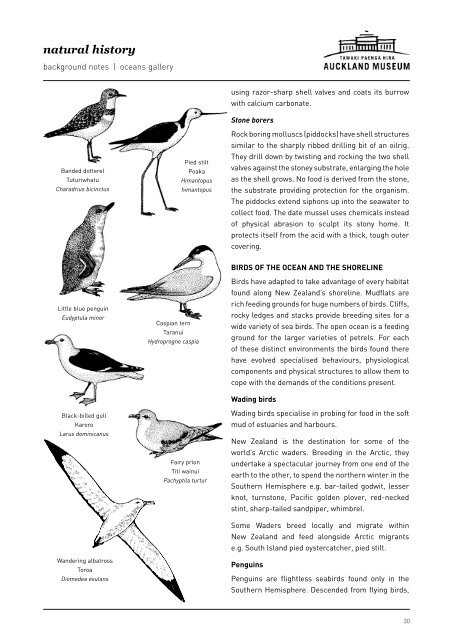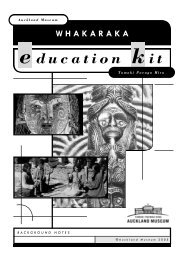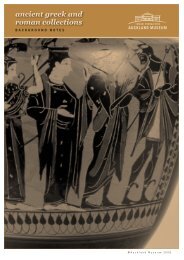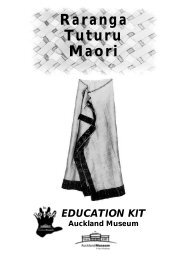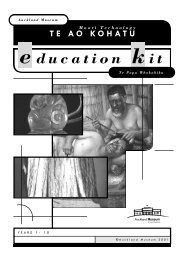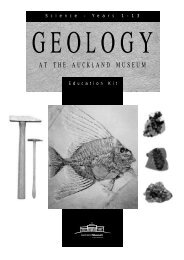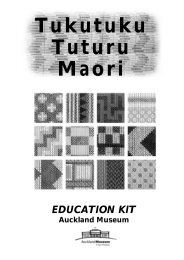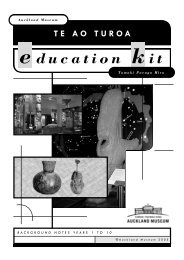Create successful ePaper yourself
Turn your PDF publications into a flip-book with our unique Google optimized e-Paper software.
<strong>natural</strong> <strong>history</strong><br />
background notes | oceans gallery<br />
Banded dotterel<br />
Tuturiwhatu<br />
Charadrius bicinctus<br />
Little blue penguin<br />
Eudyptula minor<br />
Black-billed gull<br />
Karoro<br />
Larus dominicanus<br />
Wandering albatross<br />
Toroa<br />
Diomedea exulans<br />
Pied stilt<br />
Poaka<br />
Himantopus<br />
himantopus<br />
Caspian tern<br />
Taranui<br />
Hydroprogne caspia<br />
Fairy prion<br />
Titi wainui<br />
Pachyptila turtur<br />
using razor-sharp shell valves and coats its burrow<br />
with calcium carbonate.<br />
Stone borers<br />
Rock boring molluscs (piddocks) have shell structures<br />
similar to the sharply ribbed drilling bit of an oilrig.<br />
They drill down by twisting and rocking the two shell<br />
valves against the stoney substrate, enlarging the hole<br />
as the shell grows. No food is derived from the stone,<br />
the substrate providing protection for the organism.<br />
The piddocks extend siphons up into the seawater to<br />
collect food. The date mussel uses chemicals instead<br />
of physical abrasion to sculpt its stony home. It<br />
protects itself from the acid with a thick, tough outer<br />
covering.<br />
bIrds oF tHe ocean and tHe sHorelIne<br />
Birds have adapted to take advantage of every habitat<br />
found along New Zealand’s shoreline. Mudflats are<br />
rich feeding grounds for huge numbers of birds. Cliffs,<br />
rocky ledges and stacks provide breeding sites for a<br />
wide variety of sea birds. The open ocean is a feeding<br />
ground for the larger varieties of petrels. For each<br />
of these distinct environments the birds found there<br />
have evolved specialised behaviours, physiological<br />
components and physical structures to allow them to<br />
cope with the demands of the conditions present.<br />
Wading birds<br />
Wading birds specialise in probing for food in the soft<br />
mud of estuaries and harbours.<br />
New Zealand is the destination for some of the<br />
world’s Arctic waders. Breeding in the Arctic, they<br />
undertake a spectacular journey from one end of the<br />
earth to the other, to spend the northern winter in the<br />
Southern Hemisphere e.g. bar-tailed godwit, lesser<br />
knot, turnstone, Pacific golden plover, red-necked<br />
stint, sharp-tailed sandpiper, whimbrel.<br />
Some Waders breed locally and migrate within<br />
New Zealand and feed alongside Arctic migrants<br />
e.g. South Island pied oystercatcher, pied stilt.<br />
Penguins<br />
Penguins are flightless seabirds found only in the<br />
Southern Hemisphere. Descended from flying birds,<br />
30


